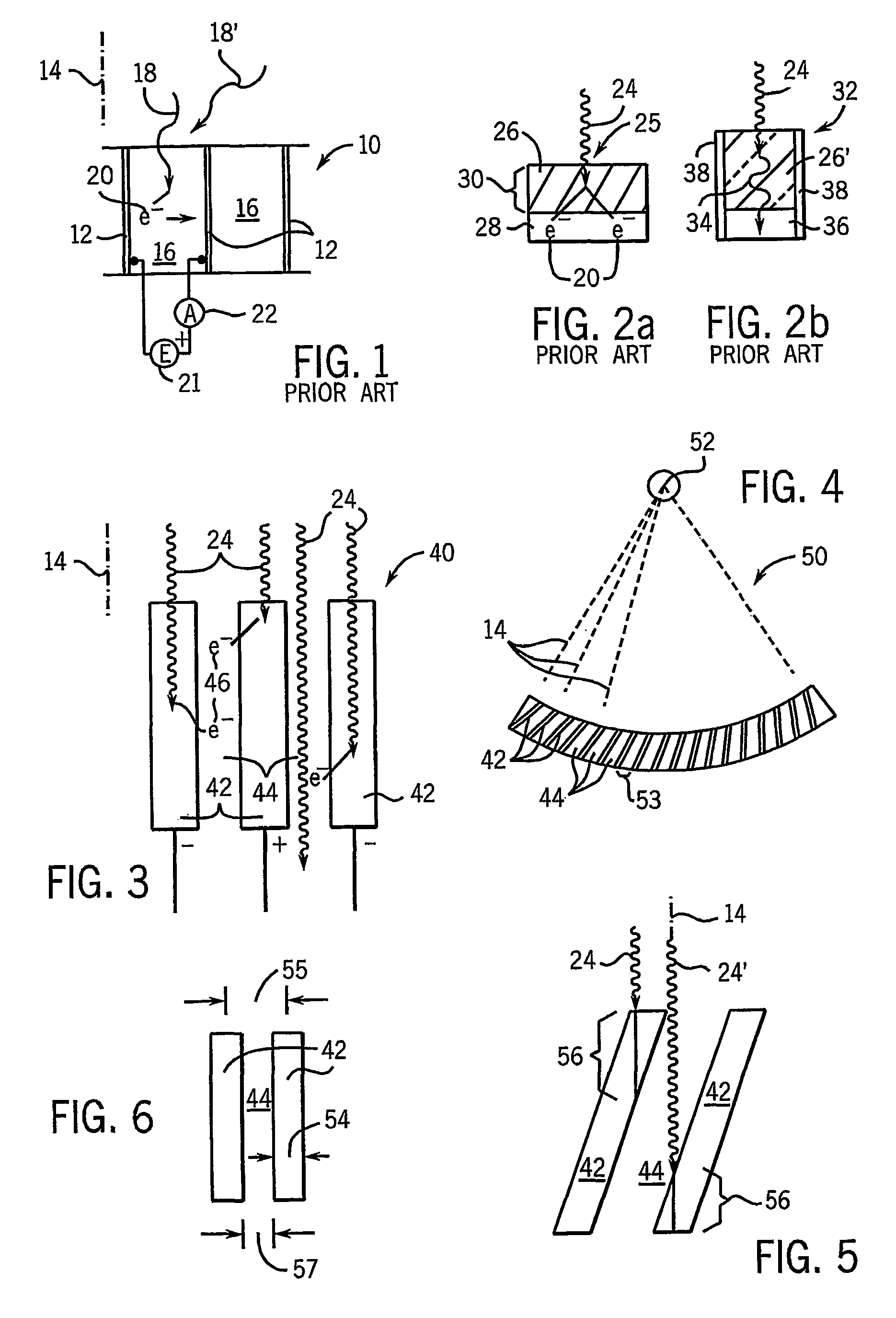Radiation detector with converters
a converter and radiation detector technology, applied in the direction of photometry, optical radiation measurement, instruments, etc., can solve the problems of limiting the conversion efficiency of the detector, limiting the efficiency of the ionization detector, and the manufacture of the transparent scintillating converter plate b>26/b>′ using such high-quality scintillators, so as to avoid the reabsorption of electrons
- Summary
- Abstract
- Description
- Claims
- Application Information
AI Technical Summary
Benefits of technology
Problems solved by technology
Method used
Image
Examples
Embodiment Construction
[0042]Referring now to FIG. 3, a detector 40 of the present invention provides for a series of longitudinally extending converter elements 42 aligned generally with the local radiation axis 14 of radiation propagation. The converter elements 42 may be, for example, planar vanes or may be rods or other shapes.
[0043]Converter elements 42 are separated from each other in a direction transverse to the radiation axis 14 to create interconverter volumes 44 such as may be filled with an ionizing medium such as a gas including, for example, xenon. The gas may be compressed in a housing (not shown) so as to increase the odds of electron-gas interaction in the interconverter volumes 44.
[0044]MeV x-rays 24 received by the detector 40 strike the converter elements 42 to produce high-energetic electrons 46 which proceed into the interconverter volumes 44. The electrons ionize the gas in the interconverter volumes 44. Some MeV x-rays 24′ will pass completely through interconverter volumes 44 with...
PUM
 Login to View More
Login to View More Abstract
Description
Claims
Application Information
 Login to View More
Login to View More - R&D
- Intellectual Property
- Life Sciences
- Materials
- Tech Scout
- Unparalleled Data Quality
- Higher Quality Content
- 60% Fewer Hallucinations
Browse by: Latest US Patents, China's latest patents, Technical Efficacy Thesaurus, Application Domain, Technology Topic, Popular Technical Reports.
© 2025 PatSnap. All rights reserved.Legal|Privacy policy|Modern Slavery Act Transparency Statement|Sitemap|About US| Contact US: help@patsnap.com



